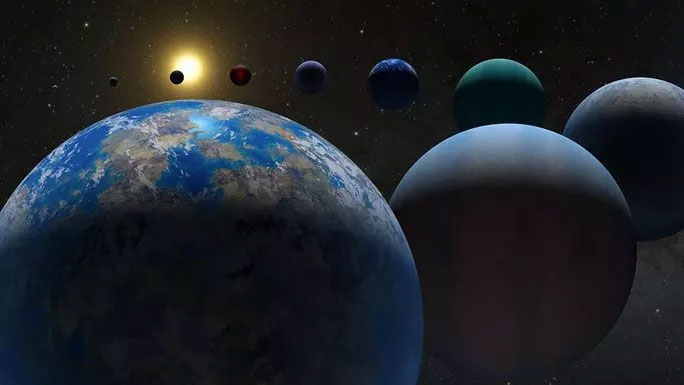A Vast Earth Twice the Size is Impossible, as Astronomers Have Just Discovered a Planetary Desert of Death.
Rocky exoplanets with Earth-like living conditions have been found in the universe, but they are fewer than expected because such planets are often too small and dim to observe.
A more feasible size for study—twice the size of Earth—has never been discovered. A team of scientists from Rice University in Texas, the University of California, Los Angeles (UCLA), and the Max Planck Institute for Astronomy in Königstuhl, Germany, has found an explanation in a study recently published in The Astrophysical Journal Letters.

Scientists have just discovered the reason behind the absence of certain expected types of planets – (Photo: NASA/JPL-Caltech)
Based on massive data collected from telescopes around the world, they constructed a remarkable planetary formation model, indicating the common migration of young planets.
This phenomenon has been mentioned in studies about the Solar System, where the most certain migrator is Jupiter: It moved closer to the Sun in its early days, contributing to the formation of smaller planets between it and the Sun, including Earth.
However, the new supercomputer simulation also shows that the inward movement of planets in the dust and gas disks of a young star system can lead to a catastrophic consequence: planets collide with each other, destroying one another—and if lucky, they merge into new worlds.
“The migration of young planets towards their parent star creates congestion and often leads to horrific collisions that strip planets of their hydrogen-rich atmospheres,” said Dr. Andre Izidoro from Rice University in Texas, a member of the research team.
Citing the study, Space reported that this process has transformed worlds into two types of planets: One group consists of rocky planets about 1.4 times the size of Earth or smaller; the other group includes small gas planets like Neptune, with a radius of 2.4 times that of Earth or larger.
The smaller type are planets stripped of their hydrogen-rich atmospheres, becoming rocky planets, while the larger type, which likely also experienced collisions, managed to retain a thick enough atmosphere to remain gas giants.
Our Earth may have formed in this way, with a nearly certain hypothesis about a collision 4.5 billion years ago between a different primordial Earth and a Mars-sized planet named Theia. This collision is believed to have ejected a mass of material that later coalesced to form the Moon.
Yet, clearly, despite its deadly beginnings, Earth has survived.
The new study also indicates that the separation of these two distinct types of planets creates a “desert of death”—a region completely devoid of planets between 1.4 and 2.4 times the size of Earth—occurs only during the first 50 million years of a star system.
















































